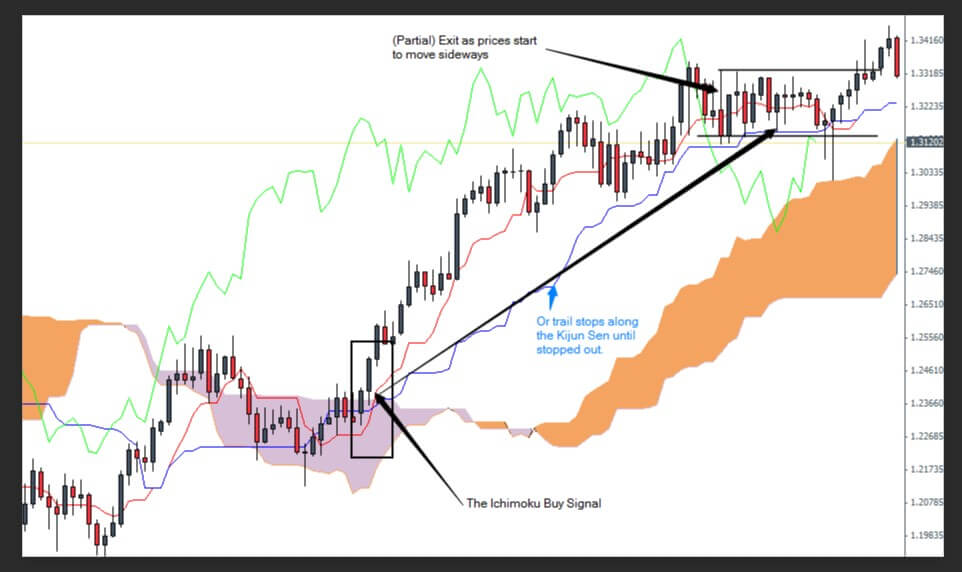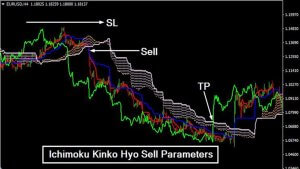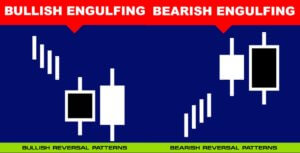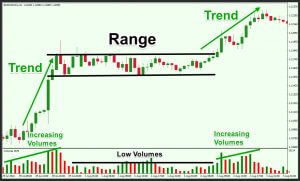Trading only with the Ichimoku will not get you to the top trading levels, but some parts of this indicator are worth analyzing as one of the best you can find according to certain professional technical traders. Taking elements from Ichimoku and applying it to your system is a good idea. Very often taking certain elements with a specific role from other systems and adapting them to your system advances trading to another level in terms of technical precision. However, these improvements are a priority only when you develop money management and a trader’s mindset.
Ichimoku allows a beginner to develop all of it. It has enough parts to cover the most important trading aspects and it is also a base for money management. Of course, developing a proper mindset takes time, and only if you have the discipline not to deviate from the plan. Ichimoku system or indicator will not get you far, at least not into the pro trading level, yet on the other hand, it presents a great path for learning. In our previous Ichimoku article, we have discussed the best ways to use it. Now we are going to see how good it is when each element is separately analyzed. Collectively we already know Ichimoku is a good indicator, but can it be better or can you use some parts of it that are just great on its own for something else?
The synergic effect all these elements create can be broken if you tamper with them, but does it mean a system is great only if its elements are great separately? According to technical prop traders, this holds true, players make the team, however, bad players are unlikely to make a great team however good they are when playing together. So let’s break down the Ichimoku, see how good the elements are.
The Chinkou Span element is not used very often and is unique to the rules of the Ichimoku system. It is unusual in many ways since it is just a price level line shifted 26 periods back and yet it is used as a trade filter in conjunction with the Ichimoku cloud. Whatever your decision on using it is, Ichimoku trading will still be good enough provided you stick with the plans. According to professional traders, when you trade with it for a long time, you will want to move on and improve. A lot is missing with Ichimoku, forex areas you want to cover and implement into the system. Similarly to playing chess, when you start without any plan or strategy, anyone can beat you. When you follow a structure or a strategy, suddenly you can beat anyone you know. The basic strategy you have will not work against professionals, of course. This is the same feeling we get trading with Ichimoku only after some time.
Ichimoku indicators are quite old, made in 1930. They still work but makes you wonder is it possible nothing better has been made for almost a century and can new, better indicators be applied instead. When you test new indicators you will see they are not very good, more often they are abysmal when it comes to signals and filters. But occasionally you will find great ones worth keeping. Technical traders say some people hate indicators because they never went on the quest to find the ones worth in gold. Note though, the awesome indicators you find may not play well when you plug them into your system. Creating this algorithm is a lot of trial and error work that not many will want to pursue.
Even though the indicator is great but does not fit however you tweak it, keep it. Systems evolve with your improvement and research, and it may not take a while for this great indicator finds its role in a new system version of yours. Now, Ichimoku has not evolved for a long time, forex has changed, computers have changed, people too, it is interesting how it still works to a certain limit. Additionally, forcing you to use the Ichimoku indicators combination only is a very limiting view and practice. It will not get you far.
Opinion presented in this article should not concern you, especially if you already have a system that brings profits consistently. It is for those who are still building their system. Ichimoku Indicators are all based on lines calculated based on the price movements. Some will call these secondary indicators, primary is the price action. These lines create a cloud, MA crossing signals, and the Chikou Span on its own. Some people create mystery about the secrets of Chinkou Span, but there are no secrets, if traders do not see how it fits their systems it does not mean there is a secret ( and also profitable?) meaning.
It is common to see people making something more interesting by stirring up a mystery, hype, or other unproven claims. Mysticism explains nothing, however, this trend was popular since the 80s and it was carried over to healthcare, conspiracies, lifestyle, diets, mental practices, and to forex trading too. There is no room for these interpretations for professional traders. Everything technical traders do have a number, a measure, or evident meaning. Ichimoku indicator and especially Chikou Span attract esoteric interpretations you should ignore. There are so many ways Ichimoku can be interpreted and this is not the one you need even though they are popular.
Since we are going to measure the performance of every Ichimoku element separately, let’s see how Chikou Span goes on a daily chart. You can use this line in the basic already explained way or have some other interpretation with the price, for example. If we look at Chikou Span only, when the price is below the line 26 periods before we trade only shorts, and when it is above only long trades. So it is still a filter indicator and there are even more ways to use it. Try to test is with your favorite trend confirmation indicator.
Does Chikou Span filter bad trades, make your confirmation indicator better? If the answer is yes then you may have an element worth your while. However, according to the testing made by other prop traders, the results are not good and pale to other filtering methods. It should eliminate losers and keep the good as much as possible. Unfortunately, Chikou Span filtered too many winners and not enough losers whatever method we have used. So we are eliminating this element from our list, we will have to find other filters. But let’s move on to other arts of Ichimoku.
Ichimoku Cloud is formed by Senkou span A and B. The cloud is the purpose of these two lines. Traders also have many ways to what they pay attention to and how they interpret signals or filtering with the clouds and the lines. There are three main ways. The first one is the classic way, take only shorts if the price is below the cloud and vice versa. The second one is using the cloud extension. If you have noticed, the cloud goes beyond the current asset price, into the future.
Since we have it in the future, it can also mean it is plotting a prediction of how the price can behave. The cloud has a bullish and bearish color, usually marked by green and red shade. The cloud will shift bullish and bearish shades telling traders there is a price momentum shift probably too. The third most common use of the cloud is as a dynamic Support and Resistance. Traders will interpret any price breakouts out of the cloud as a signal to enter a trade. In this case, the cloud is a signal generator and a reversal predictor, not a filter indicator.
Now when we test the breakout way of interpreting the cloud we do not have consistent results. There are many cases when the price closed and broke through the cloud only to reverse. Some of the breakouts are false, some are good, overall not good enough compared to other tools. So this method is not classic but it does not mean it is better either. However, you will need to test this out yourself. As for the reversals, we found it is hard to define a reversal signal as the price can enter and get out of a cloud multiple times in a couple of days. This problem is especially apparent when in ranging areas, where reversals should work better than in trending. Whatsmore, reversal strategies are not as good as trend following according to many studies. We will eliminate the breakout way of how the cloud is interpreted and move on to the cloud predictor way.
Whenever the Kumo Cloud turns its colors, this is a signal the price is going that direction. When we have a future shift and see the cloud in front of the current price, we can use it as a predictive signal whenever it switches colors. Is it accurate in predictions? According to our tests, its performance as a trend confirmation or prediction is abysmal. It even feels like the prediction part of the cloud is there just because the cloud is used as a filter in a classic way, and the rest of it is just the result of the code. It was never meant to be a confirmation or prediction tool.
It would be great to have something that predicts the price, even with average accuracy, but we have not found a way to have anything remotely useable. A combination with other indicators could make it better, and it can be your quest to find it. Just do not invest too much effort into something it is unlikely to get better. We say this because no indicator can predict the effect of the big banks, news events, and other catalysts. The only way to partly predict this is by having insider bank information. Let’s move on to the next way.
We have only left the classic Ichimoku cloud role interpretation. While trading this way, one cannot notice trades are far apart if we trade only when the cloud filter allows for it, without any other rule, such as when the price breaks through the cloud. Now, this is great for training your discipline but it definitely filters out trends that make a difference to the balance have you taken the trades filtered. On some occasions, only two to three trades can happen on a particular currency pair in one year. This is not optimal if you want to forward test some system, it would take you a long time to have a good trading sample. When you get advanced, the Kumo cloud is not good enough. If you are a beginner, the cloud and complete Ichimiku will teach you a lot of essential skills.
After all said and done, the cloud and all of its interpretations do not have a place in prop traders’ algorithms. Moving on to the last pieces of Ichimoku, the MAs. In the article about crossovers we have presented the drawbacks and how MAs can be used more effectively. If we take the classic Ichimoku approach and wait for the MA crossover as a trade entry signal, they tend to lag too much, similarly to the other MAs types. This is not about the settings, it is inherent to crossovers no matter what settings you set. If we take the price instead of one MA and use it as the signal generator when the price close-crosses the MA, we have a whole new result. We can take the faster MA out and use only Kijun-Sen.
What we get is very good entries but not quite in line with our usual Take Profit and Stop Loss levels according to the ATR. There is simply too much drawdown. However, Kijun-Sen can play a critical role if we follow our system structure. Kijun-Sen is a top-rated Baseline element to some prop traders. On its own, it can generate consistent results if each crossover is taken as an entry. This means it is a very good candidate for our system that can refine the signals once use in conjunction with other elements.
Kijun-Sen is the element we can take out of the Ichimoku. We have described the Baseline in another article, according to one trader’s ranking, Kijun-Sen is top 100 indicator in the baseline category. You do not need to adjust the settings if you follow our structure on the daily chart. The baseline is also the core for our money management, it is the starting point for our ATR measurements and it is involved in some of the trading rules. Now you have something for a takeaway, still do not stop your search for better tools. Kijun-Sen will up your odds tremendously, still, it may not be enough for the elite rank.
Finally, you can trade Ichimoku, test it, see it in different ways, even find something we did not, there is nothing obligatory in this article. Ichimoku has a forced group of indicators, it will force you to trade its way even though it has limited performance. Later on, when you need to advance, you need to make your system. Kijun-Sen based indicator already exist, some of them have some addons that may or may not improve its effectiveness. One example of such an indicator is Jurik Smoother Kijun-Sen by Mladen, available for free. It is available on various popular trading websites.






